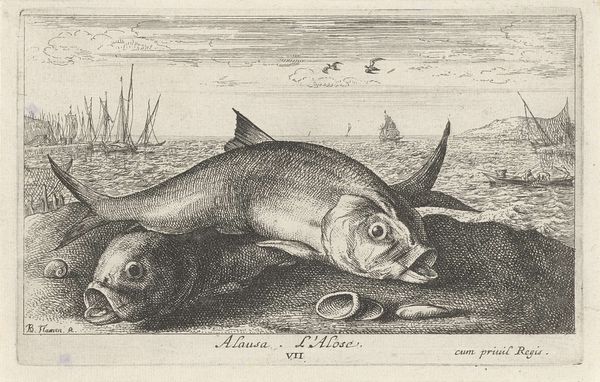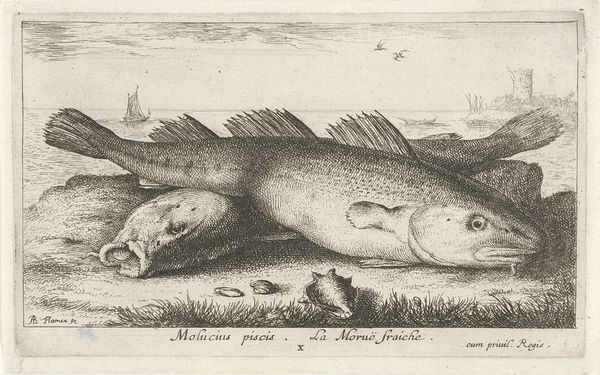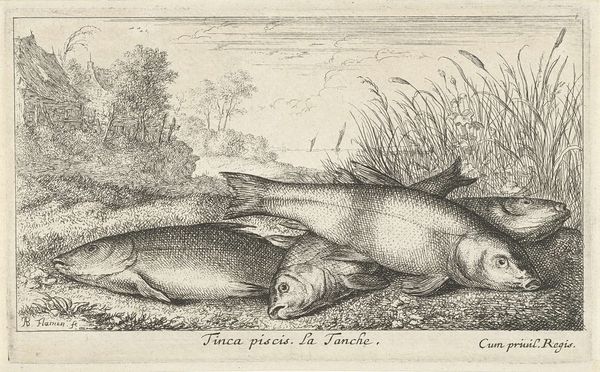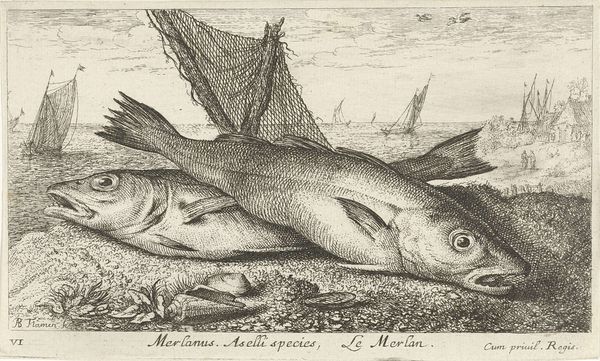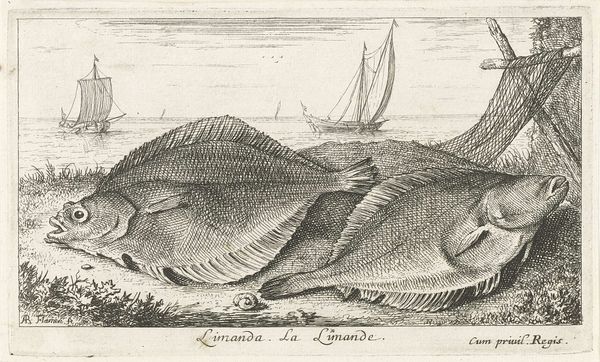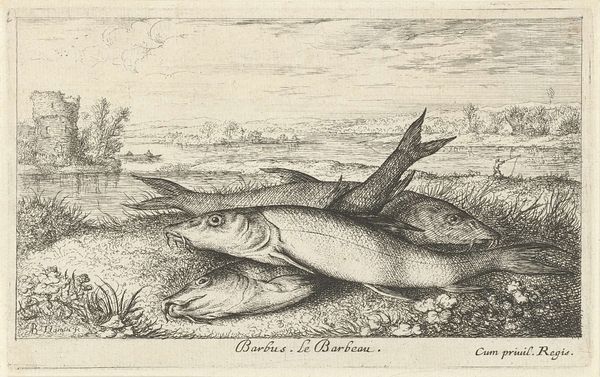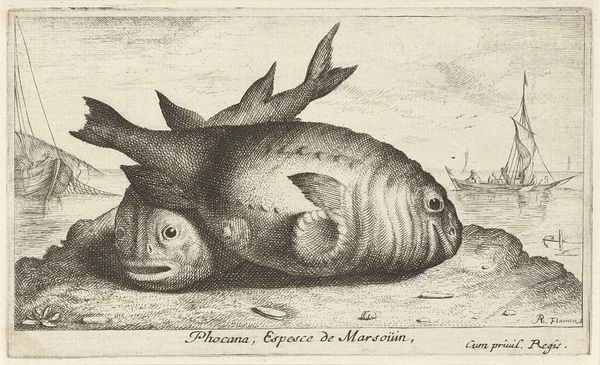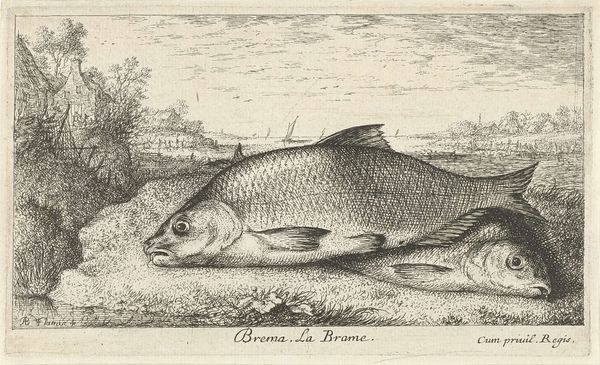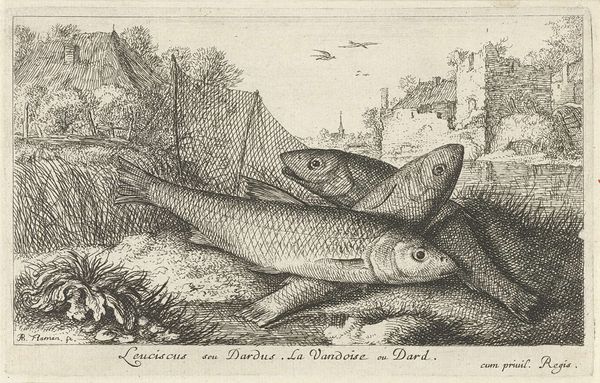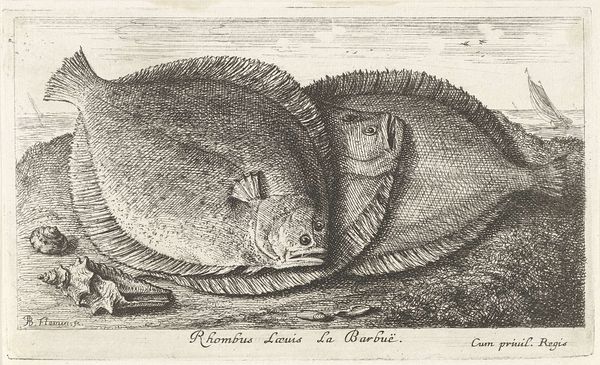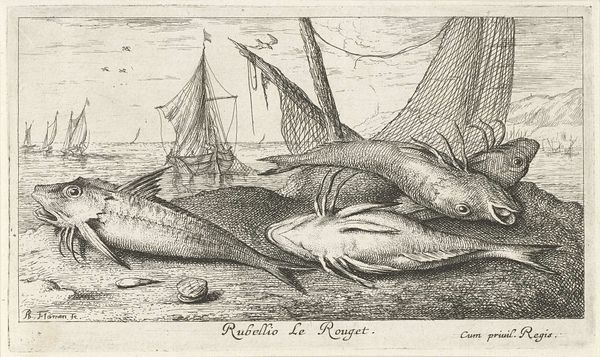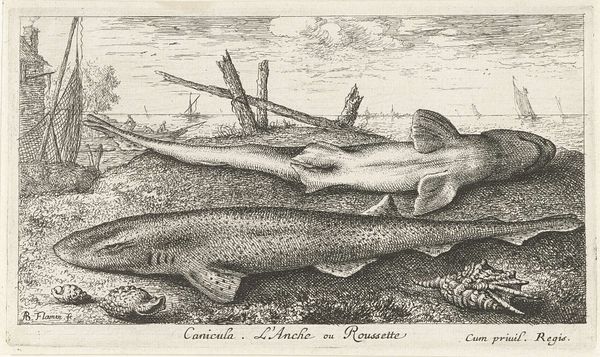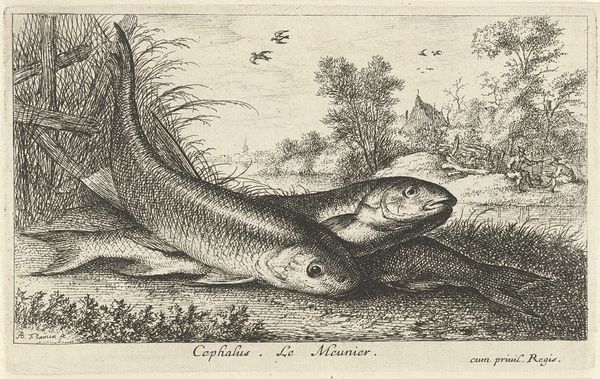
print, etching
#
baroque
# print
#
etching
#
genre-painting
Dimensions: height 104 mm, width 170 mm
Copyright: Rijks Museum: Open Domain
Editor: This is "Two Pike on a Riverbank," an etching by Albert Flamen from 1664. I’m struck by the level of detail in the fish scales and the way the lines create a sense of texture. How does your perspective illuminate this artwork? Curator: Viewing it from a formalist perspective, the piece is compelling. Consider the strategic placement of the two fish. The upper pike's tail bisects the vertical space, creating a dynamic asymmetry. Note the visual contrast between the meticulously etched scales and the smoother areas suggesting light reflection, effectively defining the form of the fish. How might the foreground reeds and background river enhance the composition's depth? Editor: I see how the reeds and river add depth, and I am intrigued by the textures, especially those diagonal lines used for shading. Can you expand on that a bit? Curator: Certainly. The etching technique itself—the linear strokes, cross-hatching, and varied line weights—achieves a tonal range and tactile quality. The density of the lines creates darker areas and shadows that lend weight to the fish's bodies. Notice the precise, almost scientific, rendering of the anatomical details. Editor: That’s an excellent observation; I also like the rendering. Did the artist add symbolic touches as well? Curator: Perhaps. It could allude to Baroque sensibilities that valued both precise observation and constructed dramatic impact. But if one adopts the formalist interpretation, one can concentrate on the careful orchestration of light and form, the dynamism of composition. Editor: I’m understanding how this meticulous observation of the formal elements affects our interpretation and artistic perception. Curator: Indeed. Appreciating how an artist like Flamen used line, form, and composition allows one to appreciate the art regardless of their understanding of cultural meaning or the symbolic intentions behind it. Editor: Thank you. Examining these lines, textures, and shapes and focusing less on what they represent gives me a different angle into this etching.
Comments
No comments
Be the first to comment and join the conversation on the ultimate creative platform.
